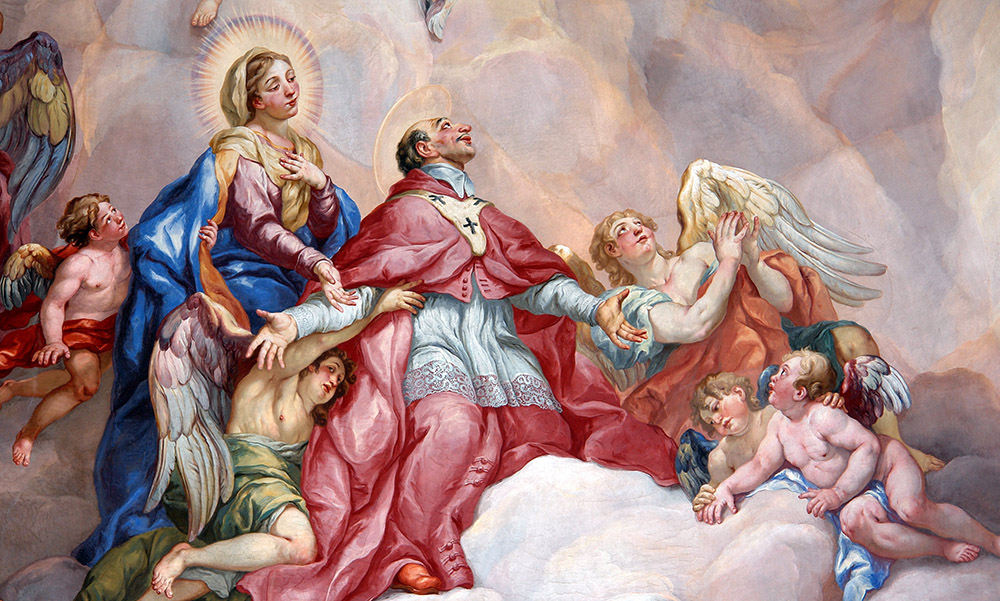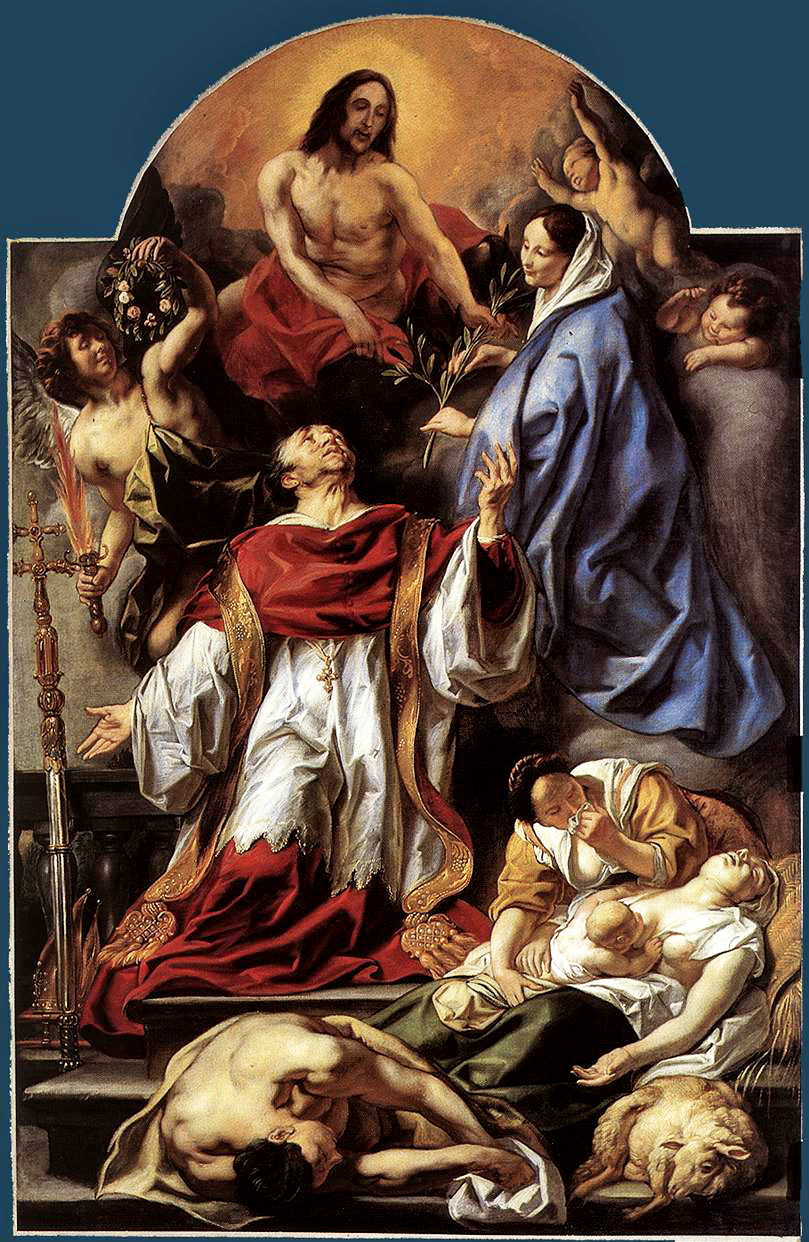Saint Charles Borromeo
Intercession of Charles Borromeo supported by the Virgin Mary
by Johann Michael Rottmayr, public domain.
Saint Charles Borromeo
Charles Borromeo was born into a family of wealth and historic nobility on October 2, 1538 in Milan, Italy. He was a Catholic priest, archbishop and cardinal during the period of Counter-Reformation against the Protestant Reformation.
He attended the University of Pavia, where he received a doctorate in canon and civil law.
In 1559, Charles’ uncle Giovanni Angelo Medici became Pope Pius IV. He summoned Charles to Rome and made him a cardinal, entrusted with the seal of the Holy See.
At that time, Charles was also appointed a supervisor of the Papal States, responsible for the Knights of Malta, Carmelites and Franciscans.
During his four years in Rome he lived simply. He established an academy and a college, organized sessions of the Council of Trent and participated in the creation of the Tridentine Catechism.
Carlo Borromeo was made archbishop of Milan in 1564 and began a complete reformation of the archdiocese. He restored dignity to church services and established colleges, communities and seminaries dedicated to the education of those who wished to enter holy orders.
The year 1576 brought crop failures and a plague. Although many fled the city, Charles stayed to help care for the ill and give last rites to the dying. He went into debt paying to provide food for the hungry.
While implementing reforms of the Counter-Reformation against the Protestant Reformation, as dictated by the Council of Trent, Borromeo would sometimes have conflicts with secular and religious officials who were resistant to change, including the Pope.
Carlo Borromeo fell ill with fever and ague during his annual retreat in 1584. His condition became worse after he returned to Milan, and he died on November 4, 1584 at the age of 46.
He was beatified in 1602 by Pope Clement VIII and was canonized a saint on November 1, 1610 by Pope Paul V.
Saint Charles Borromeo is the patron saint of seminarians, catechists and bishops. His images may portray him in robes, barefoot, a rope around his neck, as archbishop carrying a cross and one hand raised in blessing.
Source: Wikipedia.



